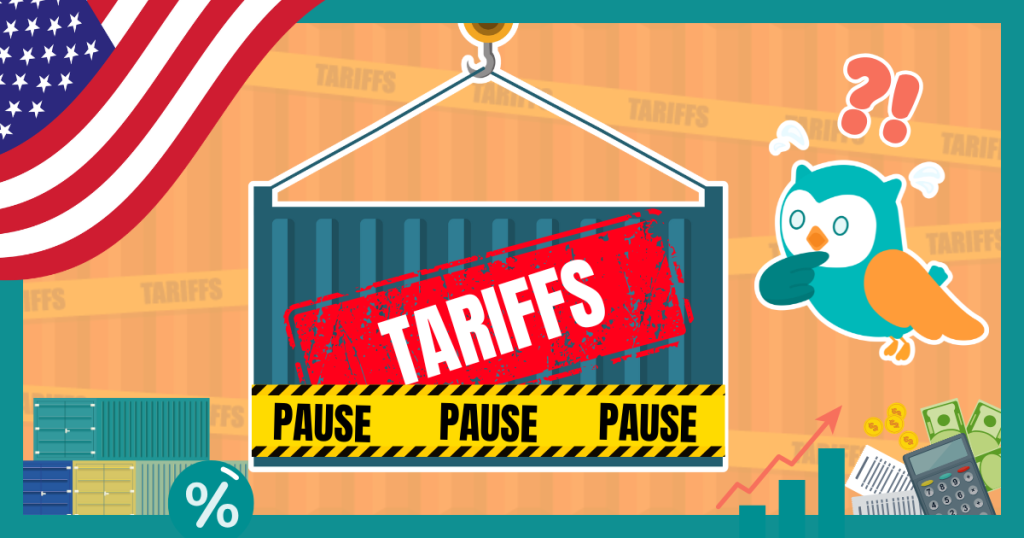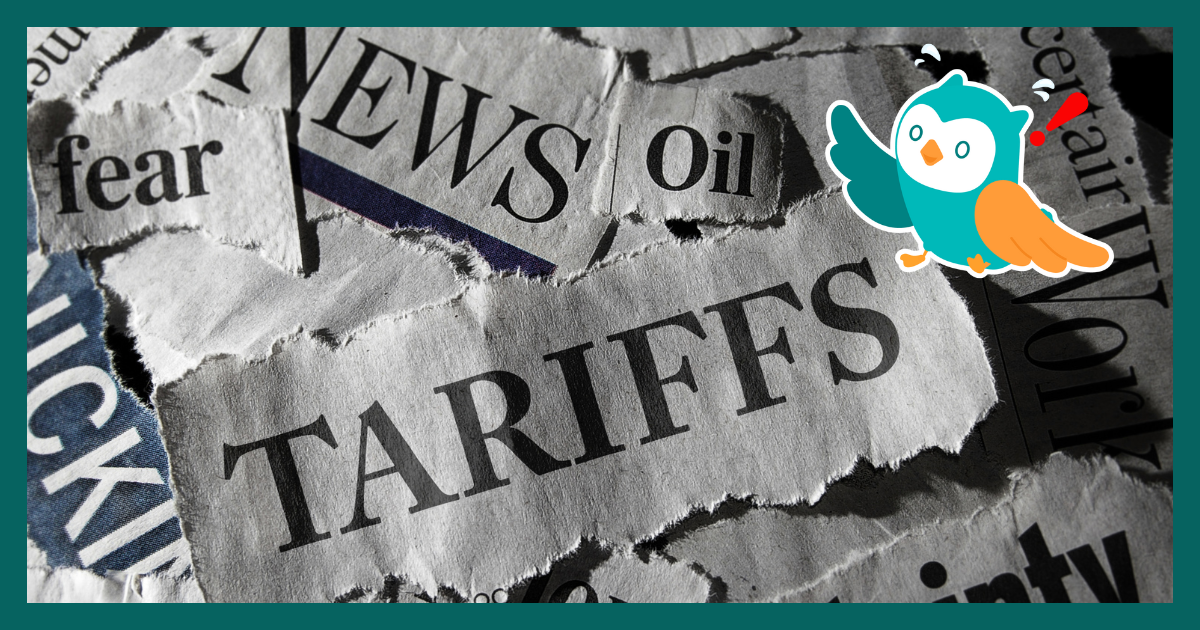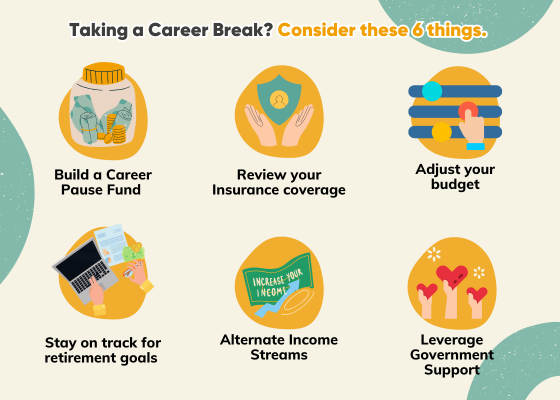On 9 April, markets were rocked by an unexpected announcement: President Trump declared a 90-day pause on tariffs for over 75 countries. Just 7 days after he announced a slew of tariffs of between 10% to 54% across all countries. While the move brought temporary relief, it also raised a critical question — what now?
At MoneyOwl, we believe sound investing starts not with market moves but with understanding your personal situation. MoneyOwl’s CEO and CIO Chuin Ting Weber made a video to help make sense of the latest news and how to navigate this period of volatility with clarity and confidence. For those who prefer reading, we have distilled the insights from the video into this article.
1. It’s Not Over — Unstable Protectionism Breeds Uncertainty
The tariff pause may feel like a breather, but it’s far from a resolution. Among the big powers, tariffs on China were further increased and Europe is still signalling regulatory responses. Stock market optimism — including the S&P 500’s strongest daily gain since the 2008 financial crisis — is welcome but the bond markets were signalling some stress, with bond yields spiking sharply.
2. What’s Really Happening in the Bond Market?
US Treasuries sold off sharply on 8 and 9 April. The 10-year bond yield spiked up from under 3.9% on Friday to over 4.5% in a matter of days, which mean falling bond prices. Some possible causes include,
- Fear of stagflation that limits policy rate cuts,
- Unwinding of hedge fund leveraged “basis trades” (where a fund buys US Treasuries and sells derivatives), or
- Foreign selling of U.S. Treasuries.
A sharp sell-off in US Treasuries, traditionally a safe haven, is ominous. If there is dysfunction, it could trigger widespread fear and lead to systemic problems such as a liquidity crisis and banking stress. It could also portend a credit crisis, as yields increase refinancing costs. Mortgage rates, which are priced off Treasuries, could also increase sharply.
Thankfully, the 10 year US Treasury auction just before Trump’s announcement went well, and foreign bids were healthy. Given the lack of alternatives, and the impact on the value of their reserves, there is unlikely to be mass dumping of US Treasuries by China in retaliation. However, if the US trades less with the world, there may be a repricing of US Treasuries and the US dollar in the longer term.
It is often said that the bond markets are powerful and there is some hint that President Trump walked back on tariffs because of the bond market stress. While a crisis has been averted, and stock prices surged, bond yields remained elevated, which tells us that at a minimum, stagflation fears are not yet cleared out – the economic impact is far from over.
3. What Should Investors in Singapore Do?
If You’re Already Invested:
Stay invested and diversified: Don’t try to time the market. Missing the best days often hurts your long-term returns.
If You’re Not Yet Invested:
- Start with your situation, not the market: Reassess your income stability, which affects how much risk you can take. Are you confident in your job and future cash flow?
- Build a cash moat: In uncertain times, cash is king. Aim for 6–12
9months of emergency savings, a higher quantum than in normal circumstances.
- Drip in, not all-in: Use dollar-cost averaging rather than try to catch the bottom. This manages the risk, not so much of markets, but of your personal job and income situation.
- Avoid rigid products: Investment-linked policies with penalties for missed payments may backfire if cash flow tightens.
If You’re a Retiree or Near Retiree, you face the sequence of returns risk. This means that if markets fall early in your retirement years, it could severely deplete your portfolio prematurely. To manage this:
- Lock in 1–2 years of cash to fund immediate needs to avoid drawing down from a portfolio during a bear market.
- Withdraw less every year: Scale down drawdowns during downturns to preserve capital.
- Rely on CPF LIFE: Use CPF LIFE payouts as your safe retirement income floor to provide a reliable income for your non-negotiable basic needs. With attractive interest rates, CPF LIFE is the best annuity in Singapore and is a stable anchor in turbulent times.
4. Focus on What You Can Control
You can’t control global markets, but you can control:
- Your investment discipline: Stay the course if you’re already diversified.
- Your risk ability: Reassess your income stability and spending needs.
- Your cash flow management: Reduce discretionary expenses and avoid unnecessary debt repayment (e.g., housing loan lump sums). Liquidity matters more than a few percentage points of interest saved.
5. In Volatile Markets, Self-Knowledge is Your Edge
As Sun Tzu wrote in The Art of War: “Know yourself and know your enemy, and you will not be imperiled in a hundred battles.”
In investing, the enemy is fear and greed. The best weapon? A plan that matches your goals, time horizon, and risk tolerance, and a strong mindset.
Key Takeaways:
- For accumulators who’ve already invested: Stay the course, stay diversified, and stay disciplined.
- For new investors or additional investments: Re-evaluate job stability, build cash buffers, and dollar-cost average. Don’t wait to catch the bottom.
- For retirees: Stabilise near-term funding needs, rely on CPF LIFE, and reduce portfolio withdrawals during downturns.
- For everyone: Focus on resilience, not prediction. Volatility is normal — we will need to belt in, be prepared for rough waters and tighten our belts.
Subscribe here for our free OwlHoots newsletter on financial planning insights, and follow us on our social media channels at @moneyowlsg for more financial wisdom you can trust.
Disclaimer:
While every reasonable care is taken to ensure the accuracy of information provided, no responsibility can be accepted for any loss or inconvenience caused by any error or omission. The information and opinions expressed herein are made in good faith and are based on sources believed to be reliable but no representation or warranty, express or implied, is made as to their accuracy, completeness or correctness. The author and publisher shall have no liability for any loss or expense whatsoever relating to investment decisions made by the reader.
This publication has not been reviewed by the Monetary Authority of Singapore




